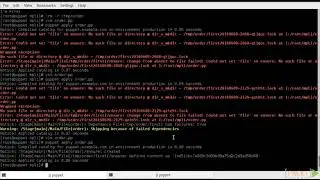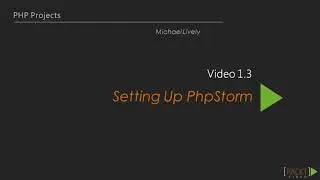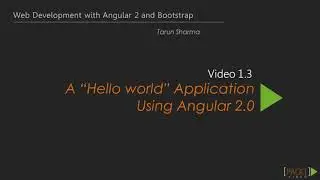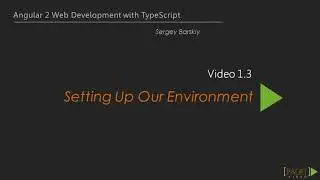Mastering Puppet for Large Infrastructures
Deploy and configure Puppet and learn advanced techniques in a medium-to-large organization
Address issues faced in larger deployments (such as scalability and performance) and run a fully-functional infrastructure in an enterprise
Use techniques presented in this video course to create custom modules and extend your Puppet infrastructure
Learning
Initialize a code repository for your project and manage module dependencies
Configure Puppet server infrastructures by using different methodologies and components
Add features to achieve redundancy and optimize performance
Deploy specific storage components for servers to ensure fast and reliable data delivery
Implement orchestration using mcollective and Hiera for data management
Learn to trigger notifications and alerts for noteworthy Puppet events
Write efficient Puppet code tests and ensure proper code delivery to Puppet master servers
Utilize some best practices and tips on how to troubleshoot issues that might crop up
About
Puppet is a configuration management system that automates all your IT configurations, giving you control of what you do to each node, when you do it, and how you do it.
This video course takes you from a basic knowledge of Puppet to an advanced level, where you'll master the latest and most advanced Puppet features. You will discover advanced techniques to deal with centralized and decentralized Puppet deployments and take control of your servers and desktops. This course will also present interesting examples illustrating how to automate Puppet deployment for configuration management and every aspect of your systems, including provisioning, deployment, and change management. By learning these skills, you will make Puppet reliant, scalable, and high-performing.
Style and approach
Master Puppet and overcome issues faced in larger deployments with real-world examples.
Getting Started
The Course Overview
Introducing Puppet and Terms Associated with Puppet
Puppet Code, Puppet Servers, and Environments
More about Puppet Servers and Environments
Git Control Repositories and r10K
Architecting Puppet for Scalability, Redundancy, and Performance
Creating a Puppet Server Machine from Scratch
Expanding on Our Standalone Puppet CA Machine
Enterprise Configuration - Master of Master(MOM)
Performance Tuning with Puppet Server
Using PuppetDB
Understanding Storeconfigs and PuppetDB
Exported Resources
PuppetDB’s GUI
PuppetDB’s API
Extending Puppet Functionalities
Public Modules
Creating Our Own Custom Facts
Running Our Own Custom Types
Using Heira
Puppet Reporting
Setting Up Puppet for Reporting
Foreman Reporter with Our Puppet Installation
PuppetDB to Store Reports
Using Report Processors to Monitor Systems
Testing and Troubleshooting
How to Check the Syntax of Our Code?
Using rspec-puppet to Create Tests for Our Code
Beaker
Test Kitchen
Jenkins
APIs
SSL Certificates
Metaparameters and Ordering
Using PRY to Inspect the Puppet Server
Wrapping Up
Puppet Best Practices



















